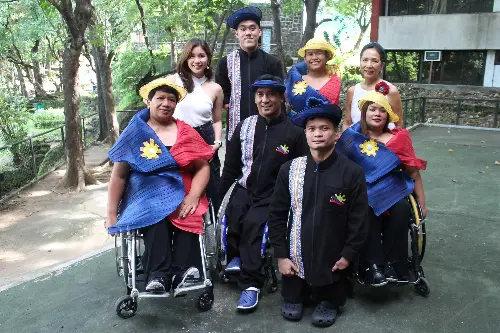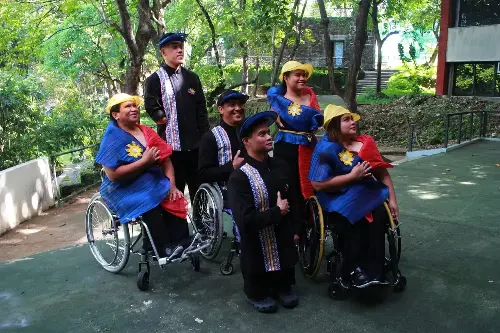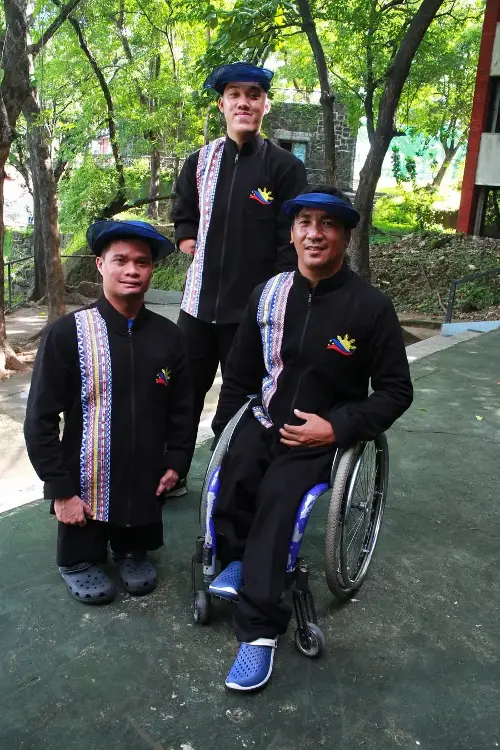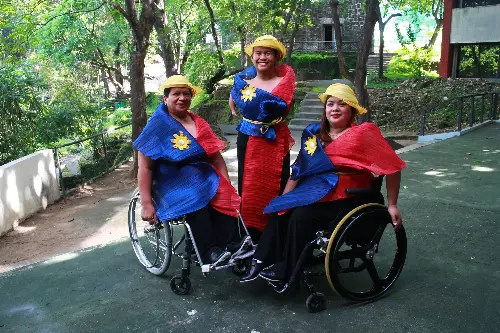
MANILA, Philippines – As Filipino para athletes Ernie Gawilan, Angel Otom, Jerrold Mangliwan, Cendy Asusano, Agustina Bantiloc, and Allain Ganapin raise the country’s flag in Paris for the 2024 Paralympics, they will be doing so in style.
Foregoing the traditional barong and terno outfits, the para athletes will be donning elevated yet timeless national costumes. The people behind it? A local sustainable fashion brand that goes by the name of DITTA.
Since its inception in the 1980s, DITTA — the brand of fashion designer Ditta Sandico — has been operating on the advocacy of giving local communities better livelihood. To create their fashion pieces, DITTA sources their fabrics from these communities, and also gives them a platform to pursue artisanal work.
Throughout its 40 years in the fashion industry, the brand mastered the creation of the women’s wrap pieces they have become known for. But until this year, the DITTA team had never tried their hand at creating national costumes — let alone for a team that would be representing the country on such a major stage.
In an exclusive interview with Rappler, Sandico and DITTA junior designer Janinna Santos shared how they conceptualized the Paralympians’ national costumes and the work it took to complete the final looks.
Heritage in motion
It was Millet Bonoan of the Philippines’ Paralympic Committee who first reached out to DITTA over a month ago to design national costumes for the para athletes, officers, coaches, and the executive committee.
“We thought of the theme for this look [as] heritage in motion. Because we’re thinking about how we can bring heritage back into the athletic teams. It’s something that’s more organic,” Sandico said.

On top of this being their first foray into designing national costumes, this would also be the first time the brand would be creating clothes for men. Despite being a small team, DITTA was up for the challenge as it meant getting to make clothes for the para athletes to stand out, as well as getting to spotlight the talents of local weavers and artisans on a global scale.
“We don’t make men’s clothes, but still we thought that would be a good platform for us to showcase the Mangyan traditional weaving and their embroidery. We showed them the design and instead of using traditional wear like the barong tagalog, we [went for] more modern and sporty looks…. We don’t have to have all these details. What we really want to promote is the local weavers, the local talents from here,” Sandico shared.
The male Paralympians’ national costumes consist of jackets and trousers that can be worn for different occasions beyond the 2024 Paralympics opening ceremony. But while practicality was a big consideration for DITTA in finalizing the designs for these outfits, so was originality.

As testament to this, the men’s team’s national costumes are adorned with Mangyan patterns. These are all hand-embroidered by the brand’s partner artisans from the Manyan indigenous community, and each pattern is unique and non-repeating.
Meanwhile, the female Paralympians’ outfits take the shape of the wrap pieces DITTA is widely known for. This time, however, it resembles the Philippine flag.

“We wanted to make it more wearable, more modern, but still very Filipino. So, that’s why we had the idea to have the color blocking on the wrap. One side is blue, one side is red, and then the belt has the tie-up, which is yellow. And it has the brooch, which is the sun,” Santos told Rappler, adding that the female athletes’ ensembles also come with yellow visors as an accent piece.
For the women’s wrap pieces, DITTA used their patented hand-woven Banaca fabric, which is harvested from Catanduanes. Sandico believes that this is the fabric that helped them land the opportunity in the first place.
“I would think that the reason why we got this job was because we were showcasing a different type of fabric, a different look altogether, and something that you can truly be proud of. Not just us, [but] also the weavers behind it, [and] the athletes as well. It’s a whole team effort,” Sandico explained.
Spotlighting para athletes
Each of the Philippines’ representatives to the 2024 Paralympics have a different disability, so the DITTA team also worked closely with them to ensure that their final designs were really tailor-made for each Paralympian.
“We had to take into consideration those things when making the design. They’re uniform because they have a similar design, but they’re not uniform in the sense that they have different technicalities and different cuts to cater to whatever the Paralympians need,” Santos explained.
More than anything, however, the Paralympians will be able to sport national costumes that will make them stand out on the international stage.
“We had a meeting with [the Paralympic Committee of the Philippines, and they] were saying that they came to us because the Paralympians are not noticed. But when we are able to make designs for them, they stand out. And with the bold colors and with the bold designs, they’re able to be noticed for their abilities and their talents,” Santos shared.
And as the para athletes finally take the stage during the opening ceremony of the Paris Paralympics on August 29, they’ll be carrying the work of the indigenous weavers and local artisans along with them. – Rappler.com